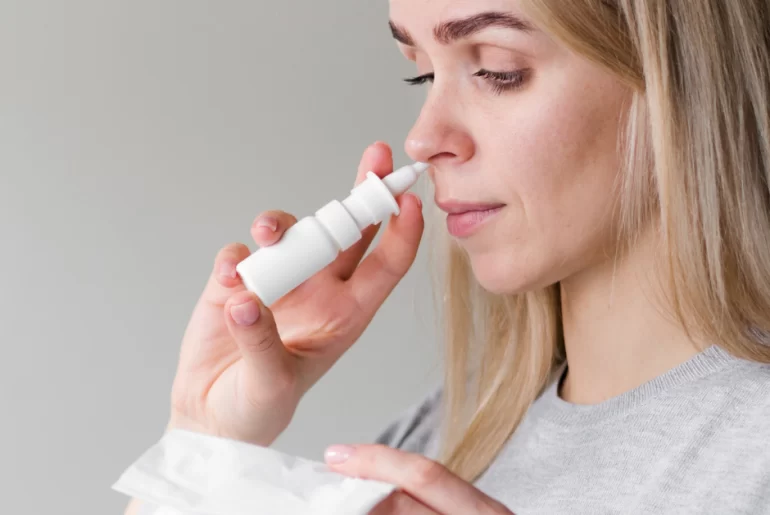Allergies are a common and often frustrating health issue that affects millions of people worldwide. Among the various allergy treatment options available, Flonase stands out as a popular and effective nasal spray. In this comprehensive guide, we will delve into the details of how to use Flonase for maximum allergy relief. From understanding its mechanism of action to proper administration techniques, we will cover everything you need to know to make the most out of this medication.
Table of Contents
Understanding Flonase: Mechanism of Action
Flonase, with its active ingredient fluticasone propionate, belongs to a class of medications known as corticosteroids. These nasal sprays work by reducing inflammation in the nasal passages, which is a common symptom of allergies. Flonase not only alleviates the discomfort caused by inflammation but also helps prevent allergic reactions by blocking the release of certain chemicals responsible for triggering allergy symptoms.
Consultation with a Healthcare Professional
Before starting any new medication, including Flonase, it’s essential to consult a healthcare professional, preferably an allergist or an ear, nose, and throat (ENT) specialist. These professionals can evaluate your allergies, medical history, and current medications to determine if Flonase is the right choice for you. They can also provide personalized dosing recommendations and guidance on how to incorporate Flonase into your allergy management plan.
Proper Administration Technique
Preparation: Before using Flonase, ensure that you have a clean, dry tissue on hand. Blow your nose gently to clear any mucus and create a clear pathway for the medication.
Shake the Bottle: Gently shake the Flonase bottle to ensure that the medication is properly mixed.
Prime the Pump: If you are using Flonase for the first time or if you haven’t used it for a while, you’ll need to prime the pump. This ensures that the spray delivers the correct dose. To prime, hold the bottle with the spray nozzle pointing away from you and press down on the pump until a fine mist appears.
Positioning the Spray: With your head upright, insert the spray nozzle into one nostril. Tilt the nozzle slightly away from the center of your nose, aiming it toward the outer wall of your nostril. This helps the spray reach the nasal passages more effectively.
Administering the Spray: Start to breathe in gently through your nostril and, as you begin to inhale, press down firmly on the pump to release the spray. Breathe out through your mouth. Do not inhale while spraying, as this could lead to the medication reaching your throat instead of your nasal passages.
Switch Nostrils: Repeat the process for the other nostril. Remember to wipe the nozzle with a clean tissue after each use to prevent contamination.
Avoid Tipping Your Head Back: After using Flonase, refrain from tilting your head back for a few minutes to ensure that the medication stays in your nasal passages.
Wash Your Hands: After application, wash your hands thoroughly to prevent any potential transfer of the medication.
Dosage and Timing
The dosage of Flonase can vary depending on your age, the severity of your allergies, and your healthcare provider’s recommendations. Generally, the recommended starting dose for adults and children over the age of 12 is usually 1 or 2 sprays into each nostril once a day. It’s best to use Flonase at the same time each day for consistent allergy relief. However, always follow your healthcare provider’s instructions for the most accurate dosing regimen.
Duration of Use
Flonase is typically used on a daily basis for allergy management. However, it’s important not to use it for an extended period without consulting your healthcare professional. Long-term use of corticosteroid nasal sprays like Flonase can potentially lead to side effects, so your doctor will monitor your progress and make necessary adjustments to your treatment plan.
Potential Side Effects
While Flonase is generally well-tolerated, some individuals may experience mild side effects such as nasal irritation, dryness, or sneezing. These side effects are usually temporary and diminish as your body adjusts to the medication. If you experience severe side effects like nosebleeds, persistent headaches, or changes in vision, contact your healthcare provider immediately.
Conclusion
Flonase can be a valuable tool in managing allergies and improving your overall quality of life. By understanding its mechanism of action, following proper administration techniques, and working closely with your healthcare provider, you can use Flonase effectively to alleviate allergy symptoms and enjoy greater comfort. Remember, every individual’s situation is unique, so consult a medical professional to determine if Flonase is the right choice for you and to receive personalized guidance on its usage.
FAQ
Q1: Can I use Flonase daily?
Ans: Yes, daily use is common for consistent allergy relief.
Q2: How quickly does Flonase work?
Ans: It may take a few days to notice full effects.
Q3: Can Flonase be used for colds?
Ans: Flonase is primarily for allergies, not colds.
Q4: Can Flonase cause nosebleeds?
Ans: Nosebleeds are possible but uncommon side effects.
Q5: Is Flonase safe for children?
Ans: Yes, for children over age 4 under medical guidance.


